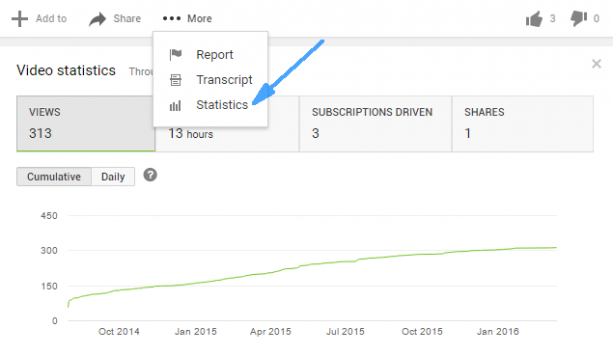You know that content marketing can help you to grow your social media presence, increase website traffic, and offer other great benefits for your business. What you don’t know is how to tell which of your efforts are working and which aren’t.
There’s certainly no shortage of analytics tools, both free and paid, that can provide you with all sorts of tracking information. The question is, what information is of most value, especially now that content is increasingly visual. To ensure you're obtaining the best results for your business, here are 9 key content marketing metrics you should be tracking.
1. Organic Inbound Links
Organic inbound links are links to your content that other people add to their blogs, social media posts, articles, and websites. These are added simply because other people find that your content is relevant to their audience or a good match to keywords that they are using in their content.
Organic inbound links are one of the best measures of content quality because the person linking to your content is receiving no incentive for doing so, other than boosting the quality of their own content. However, as noted by many SEO professionals, it's important to know which links are beneficial to your backlink profiles and those that may be harming you. Therefore, make sure you are checking the links that are affecting your site rankings.
2. Click Through Rate
There are different types of CTR you can track for your content. Whether it's the number of times your article itself is clicked on or the call-to-action within your content, these are two important action to track.
This number gives you a great idea of which articles are performing better than others. If you have a better understanding of the top performing content, you can create more content that is related to these types of ideas.
3. YouTube Shares And Subscriptions
If you're creating videos as part of your content marketing strategy, then it's important for you to track how many people are sharing your videos and the number of viewers you're attracting.
If you go to YouTube to view a video, next to the add to and share buttons, you will see a button that says more. If you click on that button, you can pull up statistics that include the number of shares your video has gained.
You can also see the number of subscriptions that was generated from this specific video. If you’ve recently added videos to your content marketing efforts, this is a quick and easy way to check the success of your newly produced videos.
4. Number of Videos Completed
There are actually a few metrics related to this. These include the percentage of a video a visitor watches at normal speed before clicking away, the number of people who watch a video to completion, and the number of minutes or seconds people are spending watching a video.
Some of these measurements can be a bit skewed. For example, if somebody rewinds a video to catch a portion they missed, that will affect measurements. Then, there is the fact that a video playing is not necessarily a guarantee that the visitor is engaged in watching that video. However, if you collect enough data, you should get a good idea of which videos are getting engagement.
5. Location
When it comes to tracking information about your content, this is a little different. If you have expanded your target marketing area to reach new geographic regions or are interested in doing so, Google Analytics and other packages can provide you with mapping information that tells you from where in the world your traffic is coming. This information can also serve to let you know which areas in which you aren’t getting any market share.
6. Comments
The number of comments you receive on your posts can be a good way to measure the amount of engagement you are generating. In addition, it helps you to see how popular or debatable your content is amongst the readers.However, you might want to do a bit of digging before you draw any conclusions. Fifty comments that are some version of “great post” may not be as meaningful a sign of engagement, as ten people who take the time to share their thoughts and experiences.
However, you might want to do a bit of digging before you draw any conclusions. Fifty comments that are some version of “great post” may not be as meaningful a sign of engagement, as ten people who take the time to share their thoughts and experiences. You want to beware of any spam comments that are only looking to gain a link from your comment section, so make sure you're reviewing the comments that come through.
7. Social Shares

Image Source
Social sharing is another good measurement of whether or not others find value in your content or see the potential to create engagement with your content.
While people might like content that they find mildly interesting or entertaining, a share is a great way to increase the awareness of your content. Whether you have posted visual content or text-based content, large amounts of social shares are a good indication of doing things right.
8. Bounce Rates
Bounce rates are a measure of the number of users who enter one of your web pages and then quickly exit before consuming a significant amount of content or answering your call to action.
If you have a webpage with a high bounce rate, you might want to revisit the content on the page. This is a good sign that you may want to revisit things and do some redesigning. There could be many different reasons for the high bounce rate, such as:
- Irrelevant information
- Lack of information
- The content isn't valuable to the reader
- Poor layout and design of the page
- The language of your content is too difficult to digest
9. Heat And Scroll Map Data
Heat and scroll maps are quite a bit different from other types of metrics because you aren’t working with raw numbers. Instead, you work with visual maps to let you know where people are scrolling to on your pages and where they aren’t scrolling, where they are clicking, where they are stopping to read or watch, and places on your pages that aren’t getting any attention at all.






